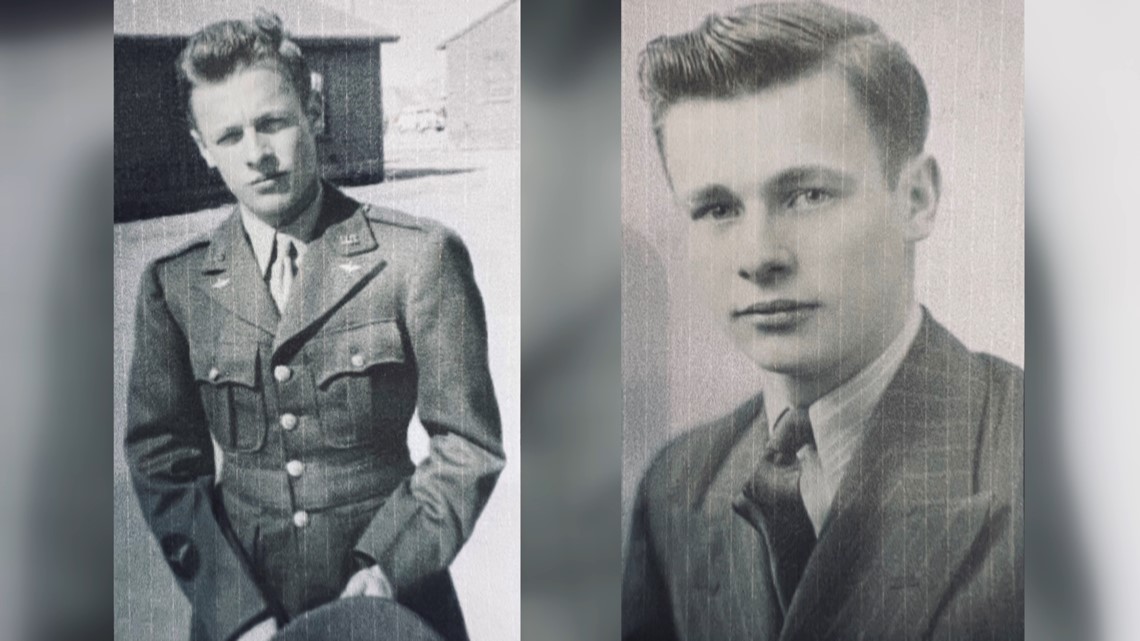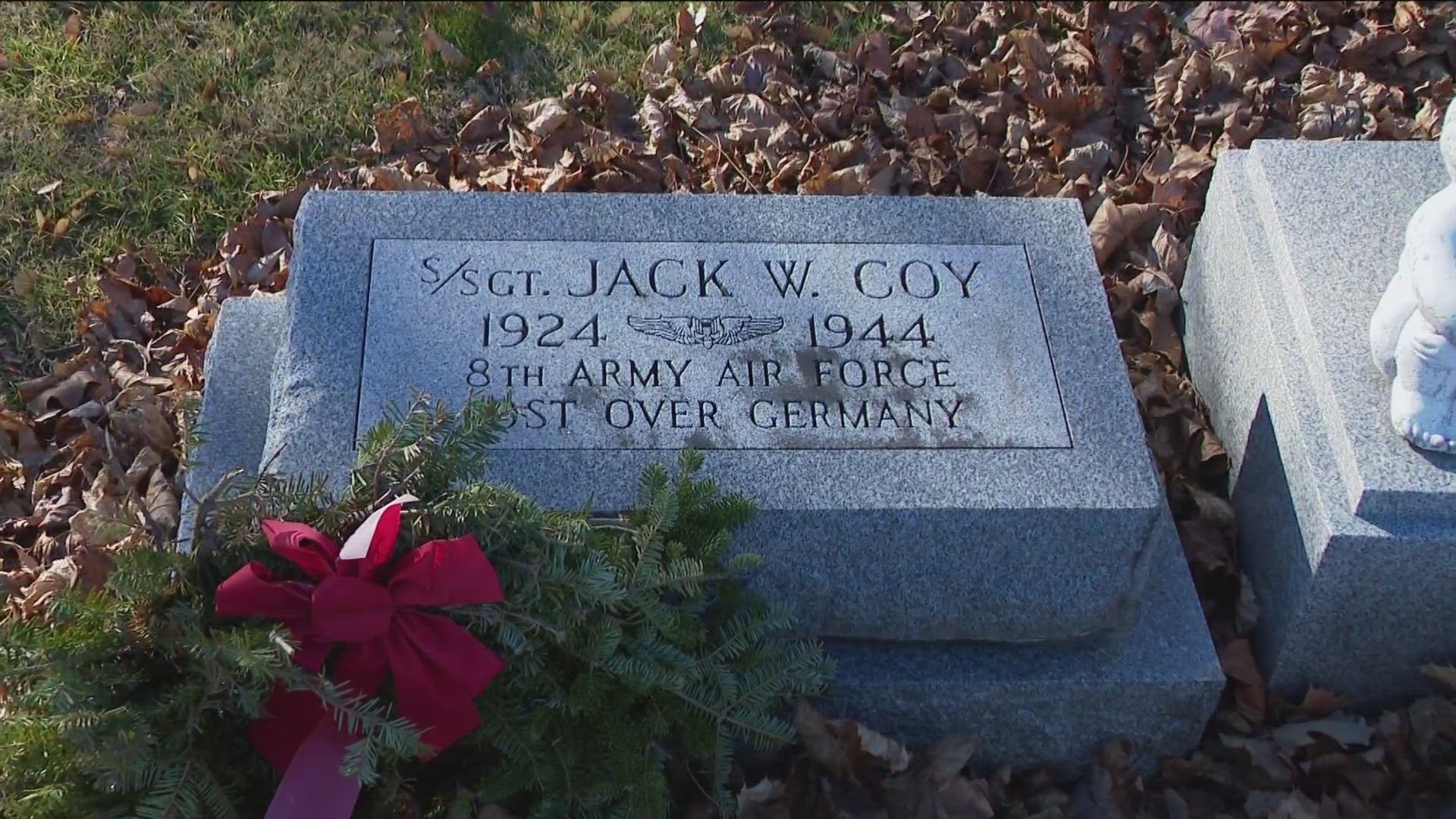OREGON, Ohio — A young soldier's journey home is nearly complete, 80 years after he was killed in World War II.
On Feb. 12, the Defense POW/MIA Accounting Agency announced that U.S. Army Air Force Staff Sgt. Jack Coy, 20, of Oregon was recently identified using mitochondrial DNA (mtDNA) analysis. The DNA was provided by his niece and her daughter, Shawnelle Johns.
Coy was killed on Feb. 24, 1944, in Gotha, Germany when his plane was hit by heavy anti-aircraft fire.
Johns said Coy wasn't supposed to be on the plane that day. He was filling in for someone else on the flight on which he was a tail gunner, the person who protects the plane from rear attacks.
"The reason he was in the back of the plane, he was a little guy, not a big guy, that's why he fit in there," said Coy's niece, Jennifer Zak.
According to DPPA spokesperson Sean Everette, Coy's remains and others that were comingled were recovered by Germans and buried in a local cemetery.
No one knew to whom they belonged.


In 1952, the American Graves Registration Command retrieved Coy's remains and the others and buried them in Belgium, but they still could not be identified.
They were brought to an American lab in 2021 and matched to the mitochondrial DNA provided by Johns and her mother and separated from the other two servicemembers with which he was originally interred.
"They asked if we could do DNA sampling so we said, 'Of course, anything to bring him home,'" said Johns.
Until now, artifacts belonging to Coy and sent to the family by the Army and an empty grave at Willow Cemetery in Oregon are all that the family had of their uncle Jack, the hero they never met.
"It's been almost 80 years that headstone's still there and it's empty and it's not going to be anymore," said Johns.
Everette said the purpose of the DPPA is to find, recover and identify servicemembers. Since it formed in 2015, it has identified 1,456 remains. The mission itself goes back to the 1970s, before the formation of the DPPA, during which time Everette said 3,301 remains were identified.
It's a monumental task with more than 81,000 U.S. servicemembers still unidentified.
Everette said that includes 1,500 who were killed in the Vietnam War, 7,500 in the Korean War and 72,000 killed in World War II.
Unfortunately, 42,000 servicemembers will never be recovered because they're believed to be at the bottom of the ocean on sunken ships or planes that were shot down.
Everette said the identification process is both closure and answers for families.
"When a servicemember raises their right hand and swears their oath to the United States and United States military, they are prepared to pay that ultimate price of their life," Everette said. "One of the promises the United States makes in return to that servicemember is to never leave them behind and to bring them home to their family if they do happen to fall in battle."
Coy's remains are at a lab in Nebraska. Everette said once his family makes funeral arrangements, a military member will escort the remains home to Oregon.
Johns said a local memorial group will hold a ceremony for Coy on Memorial Day at Clay High School, where Coy graduated in 1941.
The family is also planning a family reunion and funeral with full military honors for later this year.

